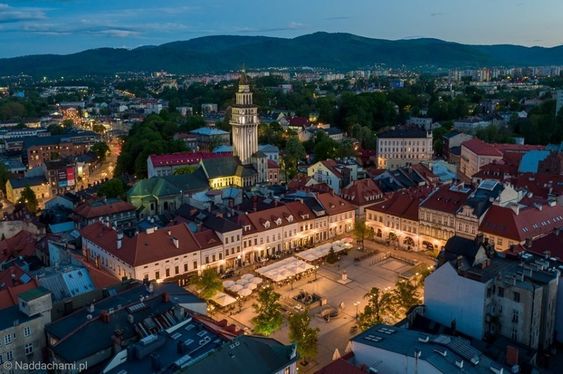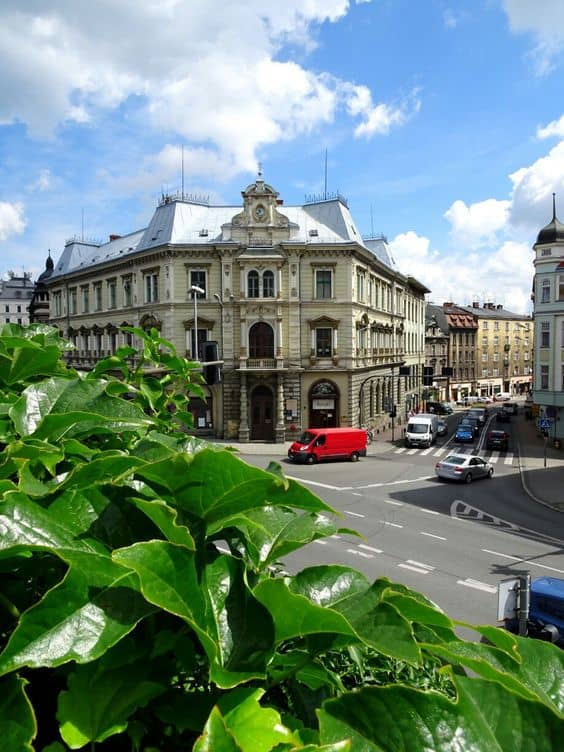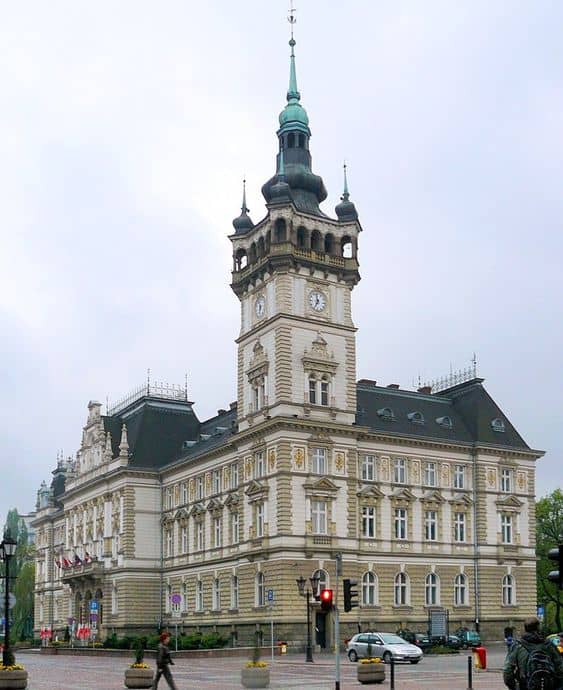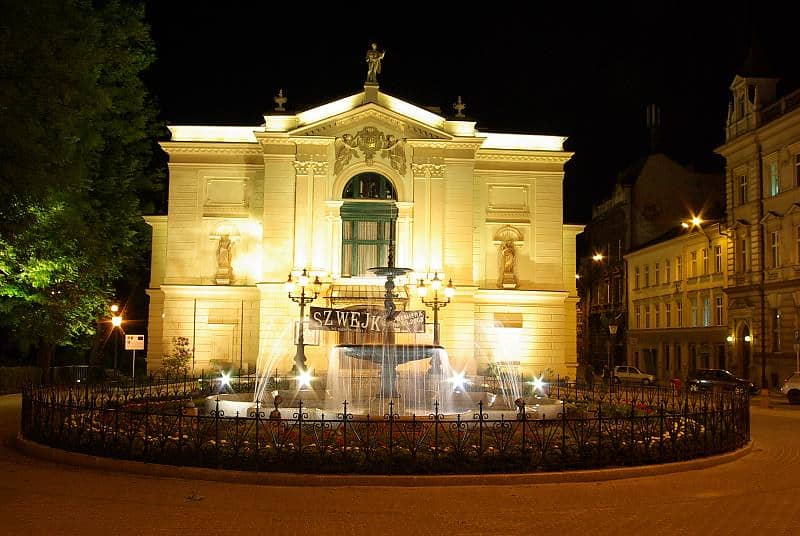Bielsko-Biala is a city in the south of Poland. With a population of 168,319 (as of December 2021), it is the 22nd largest city in Poland. It is located in the province of Silesia and has an area of 124.51 km2. Bielsko-Biaa is known for its beautiful rocky landscapes, beautiful lakes, and numerous historic sites.
Góra Szyndzielnia
You can enjoy panoramic views of the Bielska-Biala valley by hiking Góra Szyndzielna, starting at the intersection of Karbowej and Armii Krajowej. It’s an interesting trip, and a must-do in Bielsko-Bialo, Poland.
Bielsko-Biala is also home to numerous hiking trails. These trails are safe, szerokie and child-friendly. In fact, even three-year-olds can go hiking here.
The trails are well-marked. There are signs painted on trees and arrows at crossroads. There are also large boards with maps at trailheads and mountain shelters. Hikers should be aware of the five-colour hiking scale, which indicates the difficulty of different routes. A moderate hike leads to Szyndzielnia, which towers over Bielsko-Biala.
There are three gondolas that take you to Szyndzielnie. One takes six minutes to get to Szyndzielnie, and you’ll be able to enjoy the sights from above.

Stracenski Boulevards in Bielsko-Biała
Bielsko-Biala is an excellent city for business travelers, with an economy based on automotive, textile, and machine building. The city is also famous for building high-quality aircraft and gliders. Bielsko-Biala’s Old Town is very walkable, and you can explore it on foot if you like.
The city is situated in Silesian Voivodeship, and has a population of about 170,000. Its name comes from the Biala River, which means ‘White River’. It was formerly split into two separate cities, Bielsko and Biala, but were united during the 19th century. The town is close to the beautiful Beskidy Mountains, and offers a variety of activities.
Bielsko-Biala is home to many interesting historical buildings. The town was known as “Little Vienna” in the past, and its architecture is heavily influenced by Viennese style. You can see this influence in the architecture on Ulica 11 Listopada, the main promenade connecting Biala and Bielsko. You’ll also find several examples of Neo-Renancing, Baroque, and Art Nouveau style buildings in the town’s main streets.
Treasures of the Earth / Mineral Museum
The Treasures of the Earth / Mineral Museum is one of the best things to see in Bielsko-Bialsk. This museum houses many interesting exhibits about natural resources and the local history. The museum is housed in a historic building that was originally a textile factory. Its exhibits include old machines, memorabilia, and photographs, as well as information about the local textile industry.
During your visit to the museum, you can also view the beautiful Weaver’s House, which was built in the 18th century. This building is an important example of the craftsman architecture of the city. It was used for both residential and workshop purposes until the early 20th century. Inside the museum, you can find a collection of weaving tools and a variety of items related to wavering.
There is also a museum dedicated to the artist Julian Falat. The museum displays his watercolour paintings and biographical information. Julian Falat lived in Bystra village near Bielsko-Biala from 1910 until his death in 1929. In the 1970s, his home was turned into a biographical art museum, and today it is a branch of the Museum of Bielsko-Biala. The museum has many paintings, memorabilia, and objects from his travels.

Cathedral of St. Nicholas
If you’re a Roman Catholic, you’ll definitely want to visit the Cathedral of St. Nicholas in Bielsko-Biala, the main church in this town in the Silesian Voivodeship. The building is quite large, but despite its size, the interior is fairly simple.
The church was built between 1443 and 1447, but has undergone numerous reconstructions. Its distinctive tower was inspired by the belfry in Venice. There are also elements of a variety of architectural styles in this beautiful church. It is one of the most interesting objects in Bielsko-Biala. Here, you can find a plaque listing the names of the parishioners who died during World War I.
If you are a religious person, you should also visit the Church of the Saviour in Bielsko-Bial. It is located in an old Protestant quarter of the city, called the Zion of Bielsko. It was built in 1790 and was rebuilt in the mid-19th century in the neo-Gothic style.
Monument to Bolek i Lolek
In Bielsko-Biala, you can visit the Monument to Bolek i Lolec. This monument represents the legendary characters from the animated series “Pampalini” and features a hippo. It is located near City Hall on Bohaterow Warszawy Street. You can also visit the Siren Monument, which stands next to the Technician House. It was erected in 1954 and was reconstructed in 2007 for better display.
There are many places to shop in Bielsko-Bialan. You can find national and international brands, as well as local products and souvenirs. You can even take home a souvenir from Poland. There are several malls in the city.
Bielsko-Biala’s Old Town is not the largest historic district, but it has plenty of character and charm. The Sulkowski’s Castle and the cathedral are both noteworthy buildings in the city. You can also find pubs and restaurants in the Old Market Square.
Kolej Linowa Szyndzielnia
If you want to get some amazing views of the Bielsko-Biala region, you should go on the Kolej Linowa Szyndzelnia rope railway. It is operated by the Bialski Osrodek Rekreacyjno-Narciarski Debowiec. You can get to the lower station of the railway by taking a local bus. This bus will drop you right at the station. Once you get there, you can enjoy the scenic view from the lookout tower or go skiing in winter.
The Kolej Linowa Szyndzelnia was founded on 21. grudnia, 1953. You can find it in Bielsko-Biala between Olsz and Bialki.
If you love history, Bielsko-Biala’s Old Town is well worth a visit. It’s not the largest historical district, but it’s full of character and charm. The town’s cathedral and Sulkowski’s Castle are two interesting sights to see. Also, the Old Market Square is lively at night. There are many restaurants and pubs where you can eat and drink.
Zamek ksiazat Sułkowskich
One of the most fascinating museums in Bielsko-Bialo is the Sukowski Castle Museum. The museum is housed in the historic Bielsko Castle. This complex is full of treasures and is a must-see for any visitor.
This museum houses the collection of artifacts from the Sukowskis and is home to some of the city’s best examples of art. The museum also has an extensive collection of historical artifacts. You can see everything from the earliest cave drawings to ancient weapons.

Stara Fabryka
Among the places of historical significance in Bielsku-Biaej are Zamek Ksit Sukowskich, Stara Fabryka, Dom Tkacza and Faatówka. Bielsku-Biaej is also famous for the historical significance of its churches.
The city is home to several museums. If you’re interested in the history of the area, the Cathedral of St. Nicholas and the city’s medieval past are must-see destinations. Whether you’re visiting for a romantic vacation or a family reunion, you’ll find plenty of places to entertain yourself in Bielsko-Biala.
The city’s main church, Saint Nicholas’ Cathedral, dates back to the 15th century. It has been destroyed and rebuilt many times over the centuries, but it retains its historic character. In fact, Duke Ludwik Sulkowski, a Polish monarch, was responsible for its reconstruction. Today, it is a museum, featuring displays on art, archaeology and local folk culture. Its Knight’s Room, also known as the Lapidarium, is another historical attraction worth checking out.
The city has many other places to see and explore. Visitors can check out the museums, galleries, and boutiques in the downtown area. You can also grab a cup of hot coffee at one of the many cafes in the city.

